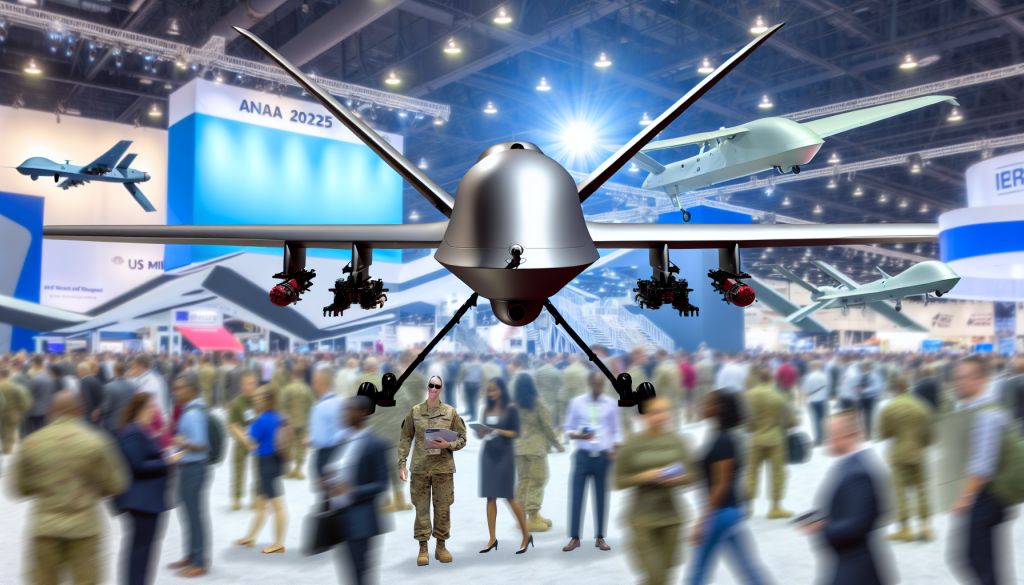Unveiling the Future of U.S. Defense Technology: AUSA 2025 Highlights
Washington D.C., United States, October 15, 2025 – The AUSA 2025 Annual Meeting & Exposition, held at the Walter E. Washington Convention Center, kicked off with a powerful showcase of next-generation battlefield technologies. U.S. defense firms took center stage, revealing innovative products designed with a focus on speed, safety, connectivity, and operational resilience for military personnel. The exhibited technologies spanned a wide range, from advanced mobile drone defenses to hybrid-ready vehicles, all embodying the Army’s modernization goals.
Lockheed Martin’s Game-Changer: The S-70UAS “U-Hawk”
Among the standout announcements was Lockheed Martin’s Sikorsky division, which introduced the S-70UAS “U-Hawk.” This revolutionary system represents an autonomous evolution of the iconic Black Hawk helicopter, designed to function without an onboard crew. The U-Hawk maintains full operational capabilities, effectively enhancing the Army’s shift toward unmanned rotary-wing aviation. Its introduction aligns with the current military strategy to increase flexibility and resilience in complex operational environments.
General Dynamics’ Digitization and Ground Defense Innovations
General Dynamics Land Systems (GDLS) took the spotlight with three systems focused on battlefield digitization and ground defense. The highlight was NEXUS— a Mission Command-on-the-Move solution that offers uninterrupted command and control connectivity while maneuvering in contested settings. In response to rising drone threats, GDLS unveiled a Pandur II SHORAD variant, complete with integrated short-range air defense mechanisms. Additionally, their new Counter-UAS variant of the XM MUTT robotic vehicle combines autonomous navigation capabilities with both kinetic and non-kinetic threat neutralization tactics.
RTX Elevates Air Defense Systems
In a significant move, RTX (formerly Raytheon Technologies) showcased updates to its air defense capabilities. Their enhanced Patriot system features the latest LTAMDS radar, promising superior detection ranges, quicker target tracking, and improved capabilities in handling multiple threats. Complementing this, RTX introduced its DeepFires launcher, a versatile dual-role system able to autonomously fire surface-to-surface and surface-to-air munitions. This development offers a strategic blend of offensive and defensive options, enhancing battlefield adaptability.
launcher, a versatile dual-role system able to autonomously fire surface-to-surface and surface-to-air munitions. This development offers a strategic blend of offensive and defensive options, enhancing battlefield adaptability.
GM Defense’s Tactical Mobility Solutions
On the mobility front, GM Defense rolled out two innovative tactical vehicle configurations. The upgraded Infantry Squad Vehicle Utility includes a modular cargo area alongside an integrated counter-drone system, enhancing operational versatility. In a groundbreaking reveal, the new Heavy Duty Hybrid Tactical Vehicle merges high payload capacity with low acoustic and thermal signatures—significantly boosting survivability in multi-domain environments.
Bell Textron’s Next-Gen Tiltrotor
Aerospace innovation saw a remarkable leap with Bell Textron’s unveiling of the MV-75 tiltrotor. This next-generation aircraft aims to outdo the V-280 Valor in agility, speed, and operational range. The inclusion of modular mission payloads and a streamlined logistics footprint underlines the Army’s commitment to flexible, long-range vertical lift capabilities. This enhanced performance is essential for operational responsiveness in diverse theaters, whether in the Indo-Pacific or Europe.
AM General’s Artillery Evolution
The tactical artillery space witnessed a revitalization with AM General’s unveiling of the next-gen Hawkeye 105mm Mobile Howitzer System. Notable features include reduced weight, quicker deployment times, and a sophisticated digital fire control system for enhanced targeting accuracy. Alongside this, the upgraded JLTV A2 showcased improved survivability and increased payload capacity, all while maintaining expeditionary agility. This evolution highlights the shift in artillery designs to meet contemporary battlefield demands.
AUSA 2025: A Glimpse into Modern Warfare
Day 1 of AUSA 2025 underscored a critical pivot within the U.S. Army and its industrial partners—accelerating the fusion of autonomy, lethality, and mobility. As demonstrated through innovative showcases, it’s clear that U.S. defense technology is not just evolving but is transitioning into actionable real-world applications. With comprehensive coverage and insights, Army Recognition offers vital updates on military innovation as it unfolds in real-time.
About the Author
Written by Alain Servaes – Chief Editor, Army Recognition Group. Alain Servaes, a former infantry non-commissioned officer, has established himself in defense journalism over two decades. He specializes in military equipment, NATO operations, and the broader global defense industry, providing expert analysis to guide the discourse on defense technology and strategy.

